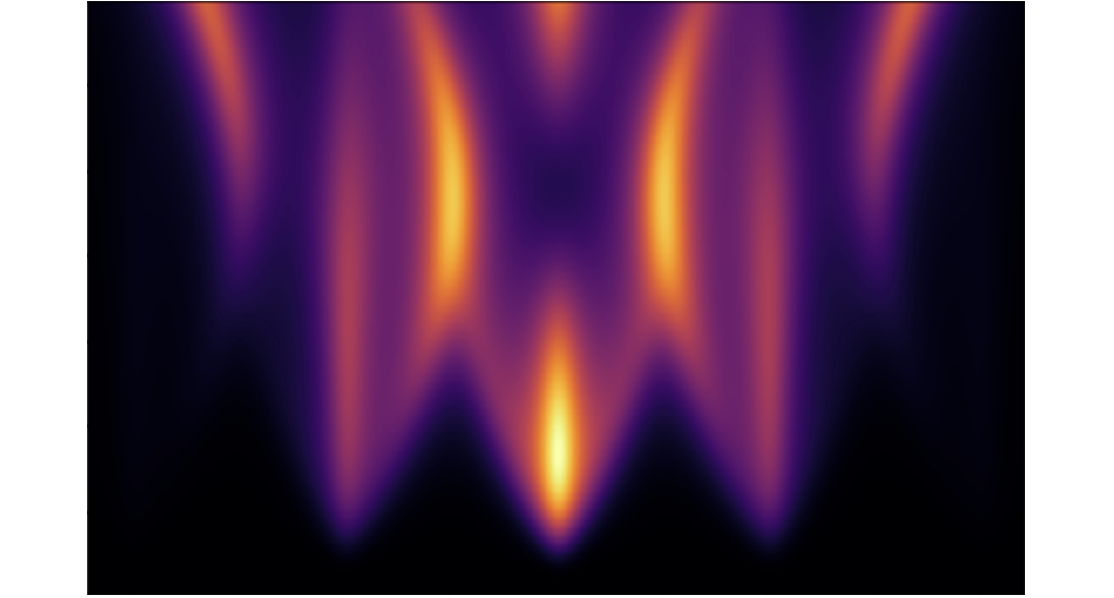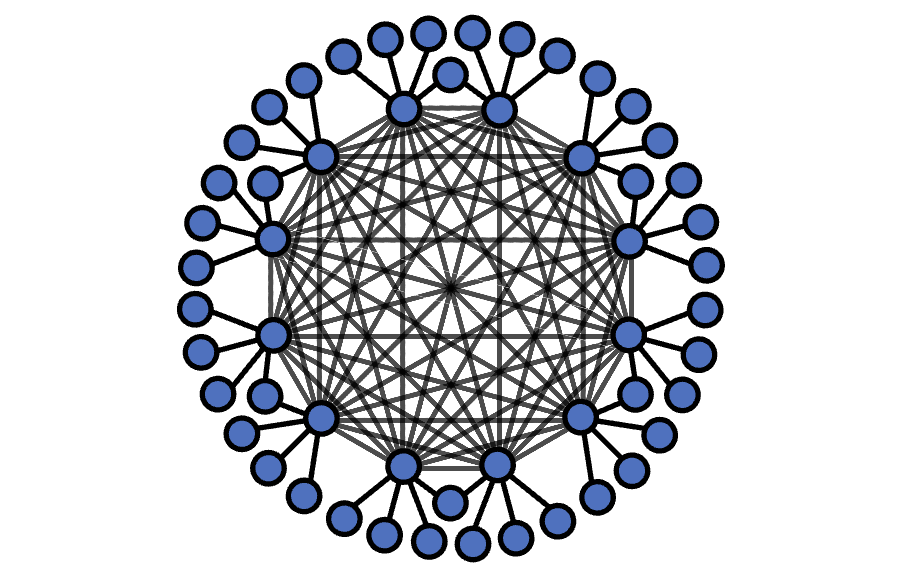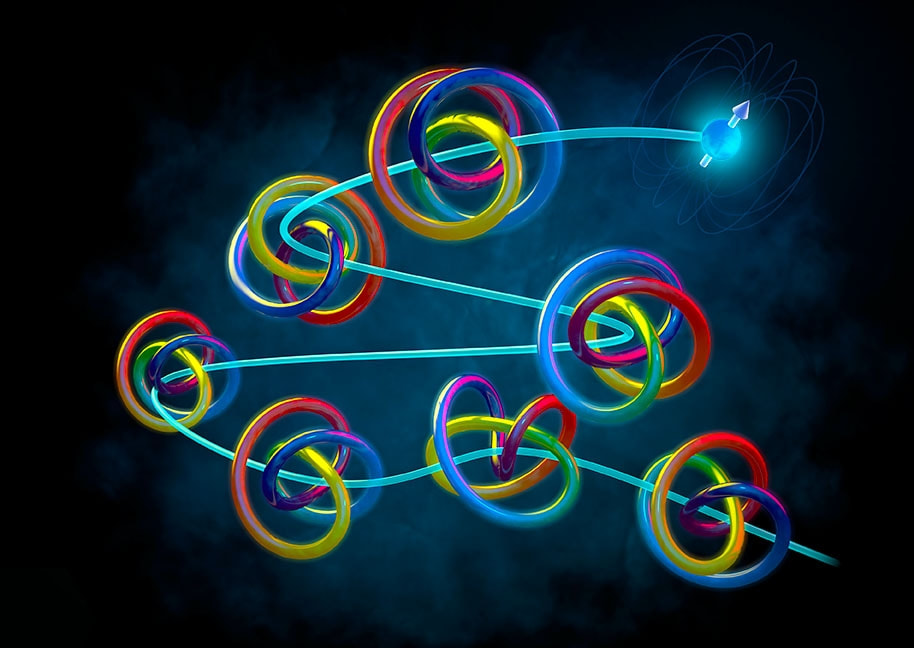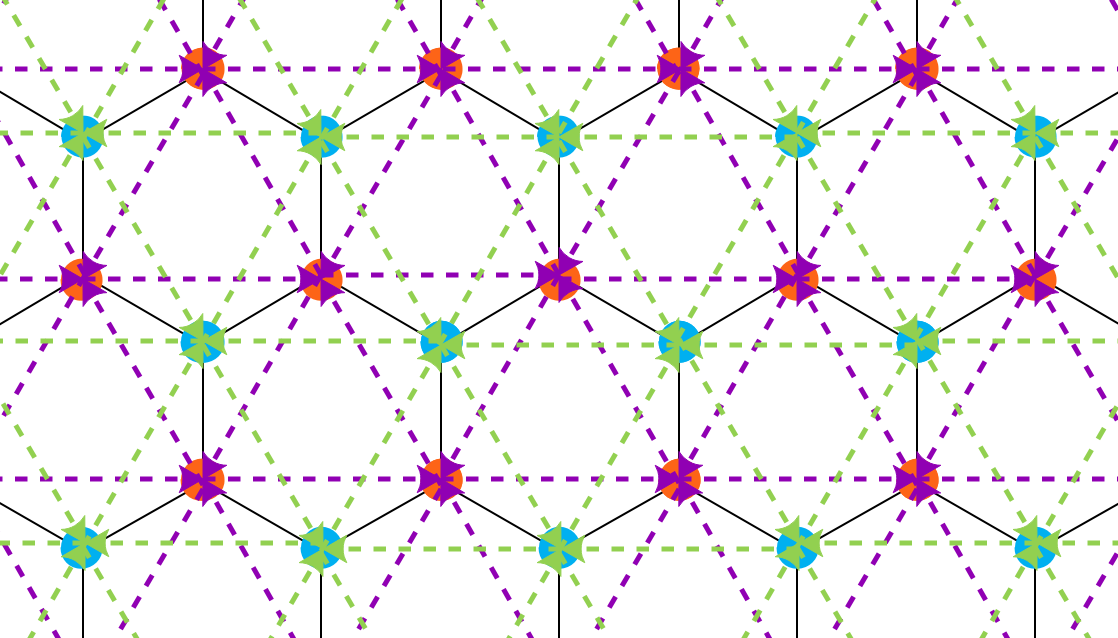Phonon-Assisted Mollow Sideband Anti-Crossing and Quantum Interference in a Modulated Two-Level System Driven ResonantlyResonance fluorescence of a two-level system is an interesting playground for observing quantum interference effects. Previous works have proposed and experimentally demonstrated quantum interference by adding a weak laser field at the frequency of one of the Mollow sidebands. This additional field introduces quantum coherence between different transition channels in the dressed state bases, and the fluorescence spectrum can be calculated and understood in the sense of a doubly-dressed atom. Here, we instead use an acoustic wave longitudinally coupled to the atom, whose phonon frequency is in near resonance with the Rabi frequency of the laser. Each phonon sideband will give a Mollow triplet due to the laser field, and the anti-crossing feature occurs when two of the phonon-assisted Mollow sidebands tend to cross. More interestingly, the central frequency in the fluorescence spectrum will be greatly suppressed due to destructive interference of different transition channels. This understanding from the physics picture agrees perfectly with the numerically calculated fluorescence spectrum with Floquet-Liouville supermatrix formalism. Collaborating with NIST Quantum Nanophotonics Group, these effects can be experimentally observed with a quantum dot coupled to a surface acoustic wave inside an acoustic cavity. |
Performance Analysis of Graph-State-Based Quantum RepeatersQuantum repeaters based on photonic cluster states have been proposed recently, which are believed to be another candidates of quantum repeaters for long-distance quantum communication besides the matter-qubit-based protocol, and can enable fast entanglement distribution rates. These all-optical protocols involve repeater graph states and tree states, whose generation has been a big challenge. We proposed to use a single quantum emitter to generate these tree-like photonic cluster states. We analyze the performance, including the loss and logical error correction capabilities, of the quantum repeater protocols using our generation scheme, and demonstrate that our generation protocol can improve the performance and lower the resource requirements significantly with strongly-coupled atom-photon interfaces, therefore paves the way to practical all-optical quantum communication. |
Photonic Cluster State Generation from a Single Quantum EmitterWe explore how to use minimum number of matter quantum emitters to generate special photonic cluster states, such as tree-cluster states and repeater graph states (RGS), for loss tolerant quantum communication and computation. Specifically, by introducing time-delayed feedback, we are able to use only one single quantum emitter to generate tree-cluster states with randomly customized branching parameters, which can be used as all-photonic quantum repeaters for quantum communication. This significantly increases the transmission rate of communication and is robust against photon loss, thus is important for building a quantum network. Possible experimental implementations include quantum dots in semiconductors, color centers in diamonds, and neutral trapped atoms in optical cavities. |
Quantum Simulation in a Shaken Honeycomb Optical LatticeOptical lattice systems with ultracold atoms are ideal platforms for quantum simulation. Thanks to the high controllability with lasers, we are able to simulate condensed matter systems and interesting spin models using ultracold atoms. One of the commonly used experimental methods is to spatially shake the optical lattice with certain geometry. By carefully choosing the shaking amplitude and phase, a shaken honeycomb optical lattice is of great interest. The shaking can introduce a gauge field to the system so as to trigger topological transitions. For example, we can introduce a complex hopping coefficient between next-nearest neighbors in a honeycomb lattice which simulates the Haldane model. |
Publications
[3] Yuan Zhan, Paul Hilaire, Edwin Barnes, Sophia Economou, and Shuo Sun, Performance analysis of quantum repeaters enabled by deterministically generated photonic graph states, Quantum 7, 924 (2023), arXiv:2209.11430.
[2] Yuan Zhan and Shuo Sun, Deterministic generation of loss-tolerant photonic cluster states with a single quantum emitter, Phys. Rev. Lett. 125, 223601 (2020), arXiv:2007.06608.
[1] Linxiao Niu, Xinxin Guo, Yuan Zhan, Xuzong Chen, W. M. Liu, and Xiaoji Zhou, Optimized fringe removal algorithm for absorption images, Appl. Phys. Lett. 113, 144103 (2018), arXiv:1809.10345.
[2] Yuan Zhan and Shuo Sun, Deterministic generation of loss-tolerant photonic cluster states with a single quantum emitter, Phys. Rev. Lett. 125, 223601 (2020), arXiv:2007.06608.
[1] Linxiao Niu, Xinxin Guo, Yuan Zhan, Xuzong Chen, W. M. Liu, and Xiaoji Zhou, Optimized fringe removal algorithm for absorption images, Appl. Phys. Lett. 113, 144103 (2018), arXiv:1809.10345.




